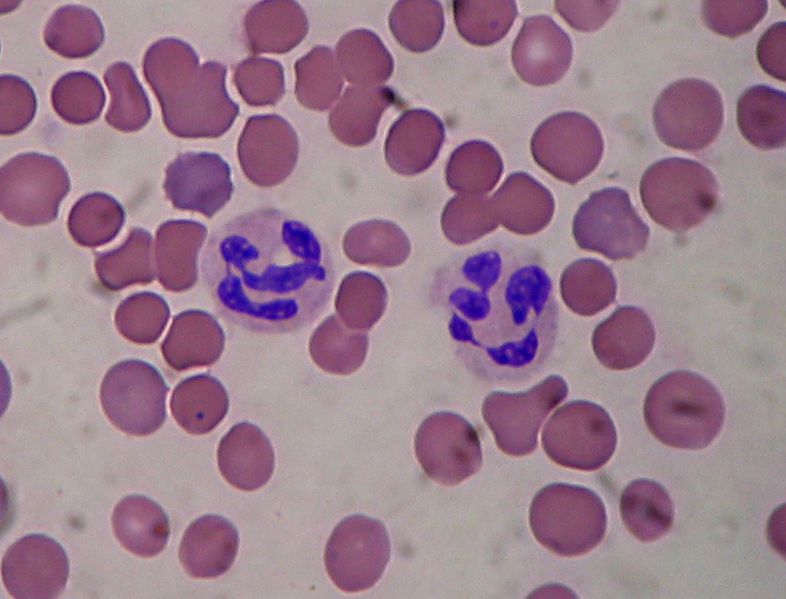-
 M78
M78
-
 Welding
Welding
-
 Eclipse of the Moon
Eclipse of the Moon
-
 Thermosiphon
Thermosiphon
-
 LH2
LH2
-
 Tunguska
Tunguska
-
 Hijacker
Hijacker
-
 Candela
Candela
-
 Dashboard
Dashboard
-
 Caruncle
Caruncle
-
 Oberon
Oberon
-
 Condensation
Condensation
-
 Yersin bacillus
Yersin bacillus
-
 Fuel oil
Fuel oil
-
 MBMS
MBMS
-
 Endocrine
Endocrine
-
 Ununoctium
Ununoctium
-
 Bio-accumulation
Bio-accumulation
-
 Colour rendering index
Colour rendering index
-
 Ussuri brown bear
Ussuri brown bear
-
 Hydraulic energy
Hydraulic energy
-
 Sun
Sun
-
 SOHO
SOHO
-
 Concomitant
Concomitant
-
 VPN
VPN
-
 Sponge
Sponge
-
 Public key
Public key
-
 Poison ivy
Poison ivy
-
 Genu valgum
Genu valgum
-
 Trophallaxis
Trophallaxis
Granulocyte
A granulocyte is also known as a polynucleated cell (because it was considered to have several nuclei), and is a white blood cell.
Structure of granulocytes
Granulocytes have large polylobulated nuclei to the extent that when examined on microscopy they look as though they have several nuclear. In reality they only have one.
The cells are produced from differentiation of haemopoietic cells into myeloblasts although the granulocytes are themselves the precursors of three types of white cells (or leukocytes) which react differently depending on stain types (neutral, basic or eosinophilic).
Function of granulocytes
Granulocytes are classified into three categories:
- neutrophils which respond to neutral stains and which have a phagocytic function;
- basophils, which respond to basic stains and which produce histamine (protein involved in the inflammatory reaction and in allergies);
- and eosinophils which stain with eosin and which combat parasites by emptying the enzymes contained in their granules.
 A granulocyte (here a neutrophil surrounded by red blood cells) has a polylobulated nucleus. © Salvadorjo, Wikimedia, GFDL 1.2
A granulocyte (here a neutrophil surrounded by red blood cells) has a polylobulated nucleus. © Salvadorjo, Wikimedia, GFDL 1.2
Latest
Fill out my online form.



